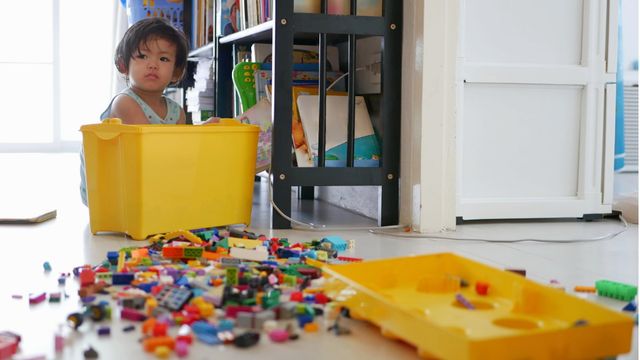
Tell me if this story is all too familiar: it all began with rattles, squeeze-to-squeaks, and soft teethers from the day your little one was born. And then, year on year, birthdays rolled around and so did the plushies, musical instruments, books, art materials, flash cards, puzzles, costumes, and so many other toys that you barely know the names for.
It began that way for us, too, and my husband and I were unwilling to admit that our home has already been invaded by toddler toys. It was only until one early morning he woke up to the noise of my back crashing to the floor after I slipped from a tangram tile.
Navigating a sea of toys scattered around the house is the hallmark of toddler parenting, and keeping these toys organized is an incredibly daunting task especially when you are lost on where to start.
As a parent you want to make sure your kids are having an enriching playtime experience, and of course you do know that toys need to get played– it’s the tidying up at the end of the day that proves to be your most formidable enemy.
Tidying up toys: What to consider
Exploring different methods for tidying up toys requires an abundance of patience: know that you may not get it right the first time. And even if you do, your victories may be short-lived because your toddlers’ toy and activity preferences vary as they age.
Regardless of where you may find yourself in your battle against the ‘toys-plosion’ in your home, the following should be your key considerations:
1. Stash with care, everywhere
Safety is always the priority when choosing storage solutions.
Containers should be smooth and without any sharp edges. Boxes should not come with buttons, latches, and other small parts or embellishments that could snap and pose a choking hazard.
For shelving and cabinetry, these should be made of thick material and their bracing should be sturdy enough to withstand the combined weight of toys and books.
In our experience, we also found that labels should not be too colorful or attractive because these usually entice toddlers to peel them off and munch on them.
My husband and I likewise frequently opt for soft baskets and pouches to store toys, rather than acrylic, wood, or glass. When it is something structured or boxy, we realized our child is inclined to place them on the floor to use as a step ladder.
Toddlers are also not known for being careful around stuff, and storage boxes made from hard materials tend to break or crack over time when repeatedly tossed around.
2. See it, get it, play with it
Toys should be easily accessible.
Trust us on this one: do not put toys where your children can see them but not reach them–you will run the risk of toddlers climbing up tables, closets, and shelf layers to get to their toys.
An added benefit to placing frequently used toys within reach is encouraging them to be independent and rely on themselves to decide how they would want to spend their playtime. As such, their favorite toys should also not be placed inside containers that would require adult assistance to open.
3. Toys for every stage
Organize your children’s toys according to age-appropriateness and developmental stage.
Displaying only the toys that are suitable for your children’s age gives you the peace of mind you need when leaving them to play by themselves.
Right now, our child is a little under two years old but overeager family members have already given us toys meant for school-age kids. You know the type: kinetic sand, modeling clay in different colors, thousand-piece jigsaw puzzles, and boxed playsets with small components.
Displaying only the toys that are suitable for your children’s age gives you the peace of mind you need when leaving them to play by themselves. Also, rotate these toys regularly to accommodate their changing skills and interests and keep them excited about playtime; this also comes with the added benefit of not overloading your space with toy clutter day in and day out.
4. Play safe, make space
A bed and a built-in closet that is perpetually locked currently compose the entirety of our bedroom. Our living room now only consists of one couch and a wall-mounted TV and shelf.
The absence of most furniture that makes a house a home would make it seem as though we had just moved in, but the decision to do away with furnishing was made necessary by our toddler’s increasing curiosity towards how doors, drawers, and hinges work.
The upside is that our child has an expanse of floor space for hours and hours of amusement, while also preventing slip and fall injuries from climbing up the furniture.
If you no longer have room for furniture to be stowed, at the very least invest in high-quality child safety locks and corner bumper guards. It also goes without saying that electrical wiring, extension cords, and outlets must be securely fastened against the wall and have individual cover guards.
5. A place for everything, and everything in its place
Categorize toys according to type and designate zones for each. Toddlers learn the importance of order especially when they locate specific toys independently. Emphasizing categories also develops kids’ reasoning skills, comprehension, and spatial awareness as they make sense for themselves which toys belong together, and how toy types are similar or different from each other.
Toddlers learn the importance of order especially when they locate specific toys independently.
In our home, building blocks, manipulatives, jigsaw puzzles, and toys with separate buildable components are placed inside individual transparent pouches. Books and activity sheets are displayed in one corner of the living room on a wall-mounted cube next to a low study table, where we have also arranged stacks of sketch pads, drawing boards, and paint canvases in a pile. Coloring materials, stamps, and stickers are placed in clear multi-slot canisters.
In another corner on the floor are toys with wheels: vehicle models, toys wagons, and multifunction toy walkers. Small to medium-sized plushies are placed in net baskets suspended from the ceiling, while the oversized ones sit on the couch and are often rotated.
Electronic musical toys, instruments, and other boxy or structured toys share space on our TV shelf, but are placed on the lower levels that can be easily reached. We also have color-coded soft baskets for when our child would want to sort stuff by color.
Toy organization in small homes
Space-saving solutions are the holy grail toy organization systems for smaller homes. Taking advantage of vertical storage, and utilizing collapsible products and multipurpose furniture are among the best pointers we can share to maximize every square inch of your home. After all, the ultimate goal is to keep the home streamlined and usable for living, not just playing.
1. Take advantage of vertical storage
Use your walls and ceiling. Mount and suspend everything you possibly can from shelving to baskets to over-the-door pockets. This way, you not only exploit the height of your home for storage space, you also get to keep your floor clear for playtime activities that may not directly involve toys. Yes, we do mean spontaneous dance parties or a game of tag.
Maximizing our vertical storage also became the default when it became clear to my husband and I how much our toddler needs space to move around. That and because floor-standing racks and boxes make for an attractive obstacle course, where we often find our child training for what seems to be a high-stakes parkour competition.
Check out this light-weight wall shelf for books and activity sheets that comes in different heights. Buy it on Lazada here.
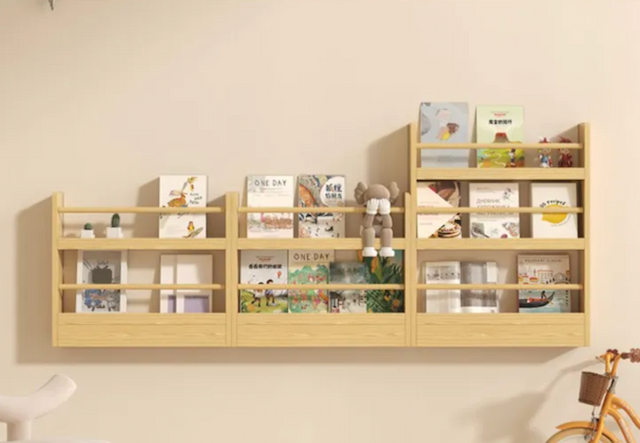
2. Use collapsible products
Toys are going to be rotated from time to time, and not all of them would need their own containers when displayed. For this reason, we advise opting for fabric bins, foldable cubes, and nesting hampers in different sizes rather than hard, structured boxes.
I previously mentioned that we find it safer to use soft containers in our home. As an added benefit, we no longer worry where to tuck and put away toy holders when not in use. We can easily cram them in the closet, and conveniently retrieve when the situation arises.
Check out this felt basket that not only stores toys but also doubles as a sensory plaything. Buy it on Lazada here.
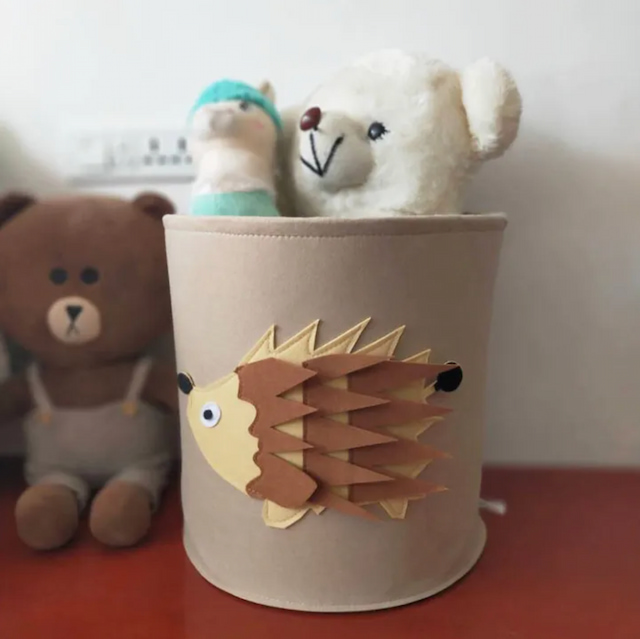
3. Opt for multipurpose furniture
Choose furniture pieces that serve multiple functions such as a couch with hidden compartments, tables with built-in chests, ottomans that double as baskets, or cribs with drawers underneath. These don’t usually come cheap but they help in eliminating the need for separate storage units.
If investing in these pieces is challenging, you can also come up with creative ways to hook multi-slot organizers or racks against furnishing and appliances.
Check out this faux-leather folding ottoman that is both space-saving and goes with most furniture. Buy it on Lazada here.
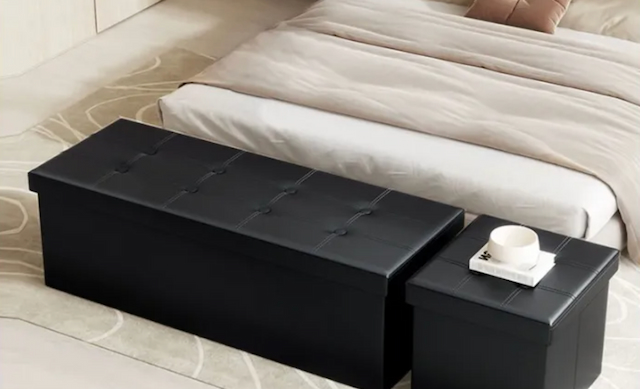
Toy organization in bigger homes
Don’t we all wish our homes were just a bit bigger, if only to accommodate our toddlers’ growing collection of toys? But even in larger homes that enjoy bigger space and more flexibility for toy organization systems, space is still not an unlimited resource. It still takes wisdom and insight to properly respond to a toy invasion.
1. Dedicate space for a playroom
Isolate the clutter in one area. Designate a room specifically for playtime and equip it with ample storage shelves, bins, and baskets to keep toys organized and accessible. As an added function that can be used well into your child’s school-age years, set up a cozy reading nest, study space, or art nook in one corner of the playroom.
Check out this adjustable drawing desk and chair that grows with our child. Buy it on Lazada here.
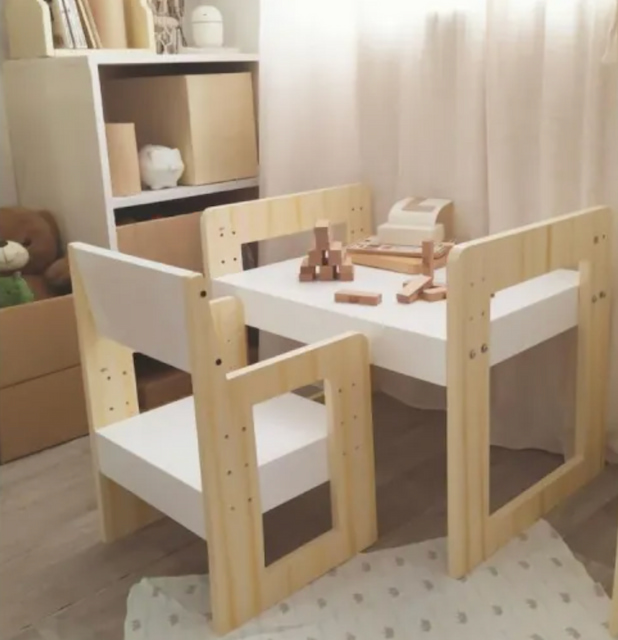
2. Invest in custom built-ins
Custom-built cabinets and drawers are tailored solutions that fit your home’s layout and family lifestyle. Consider bay window seats with low bookshelves underneath, or wall-to-wall floor-to-ceiling shelving that can fit an assortment of both toys and books. You can also do this in every part of the house like the living room or kitchen where your toddler’s stuff can co-exist with your own belongings.
Check out this sturdy TV cabinet can also serve as a bay window seat with under-storage. Buy it on Lazada here.
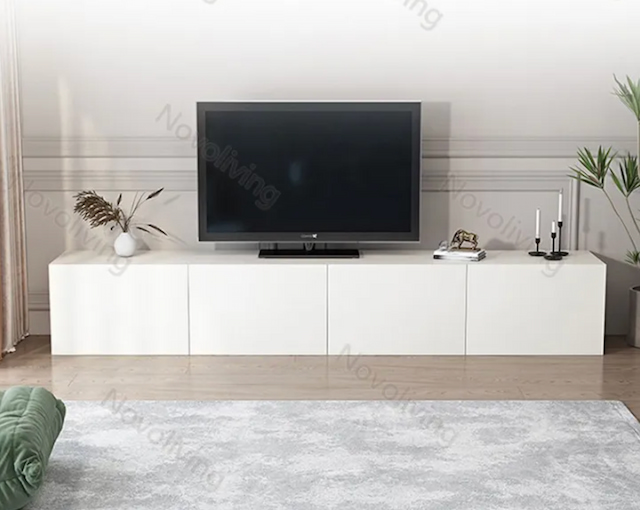
3. Use rolling carts
Because floor space is less of an issue with bigger homes, using rolling carts create a mobile and portable storage solution for playtime gear. Even as your toddler moves out and about throughout your home, toys in rolling carts can be easily moved around and played with wherever they may please.
Check out this trolley we use as an art cart when our toddler wants to draw in the kitchen. Buy it on Lazada here.
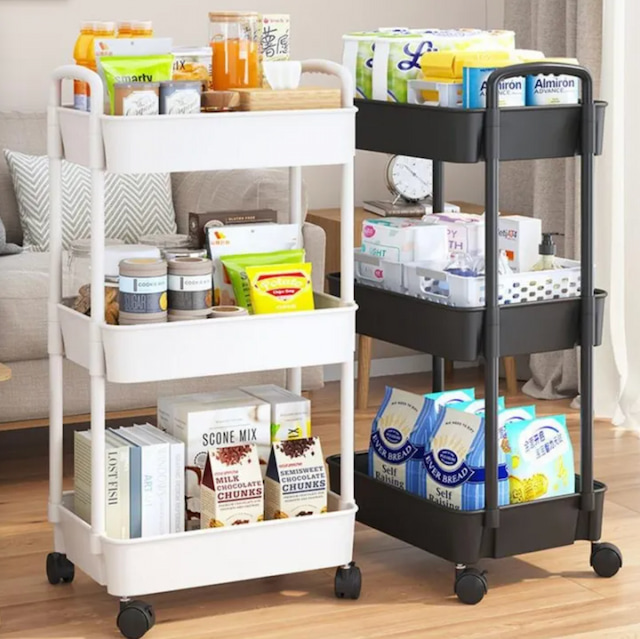
Final tip: Be intentional when letting go and buying more
Regardless of what size your home is, there will come a time when some toys would need to be disposed of and that’s okay. If your toddler has never shown interest in a specific toy regardless of how many times it graced the rotational display, know that it’s time to let go. Same thing with toys that are already in a terrible condition due to over-playing: tell yourself and your toddler that it’s time to let go.
It also pays to deliberately remind family and friends what type of toys your child is usually engrossed with, and which ones you already have.
When browsing malls or online shops, resist the temptation to buy your child toys without having a clear plan where you will put them. If it’s an item you would like to introduce to your toddler but so far unsure of how they will receive it, don’t buy the entire collection just yet. Best to gauge first whether it’s something that will engage them.
It also pays to deliberately remind family and friends what type of toys your child is usually engrossed with, and which ones you already have. In our experience, it won’t be an imposition to directly say what kinds of gifts would be productive both for your toddler and your home organization goals.
We wish we could say that keeping your home tidy and clutter-free doesn’t have to be a daunting task–we know it always will. With our tried and tested tips, however, we hope it takes some of the weight off. The toddler toy invasion is a battle we all may never win, but at least we valiantly tried.
Good luck to us!
Read how a mom turned her kids' old toys into a special memento of their childhood, here.
